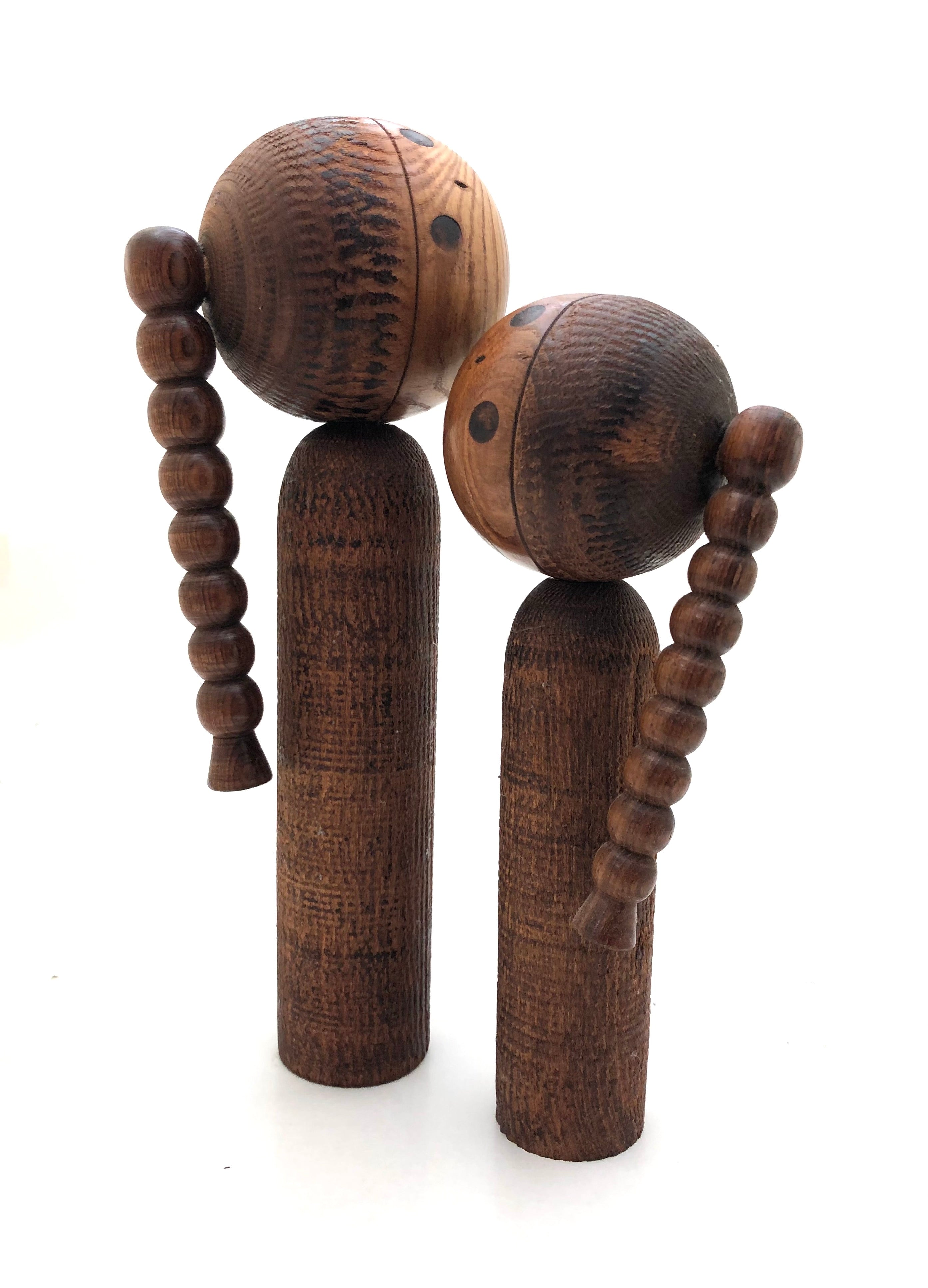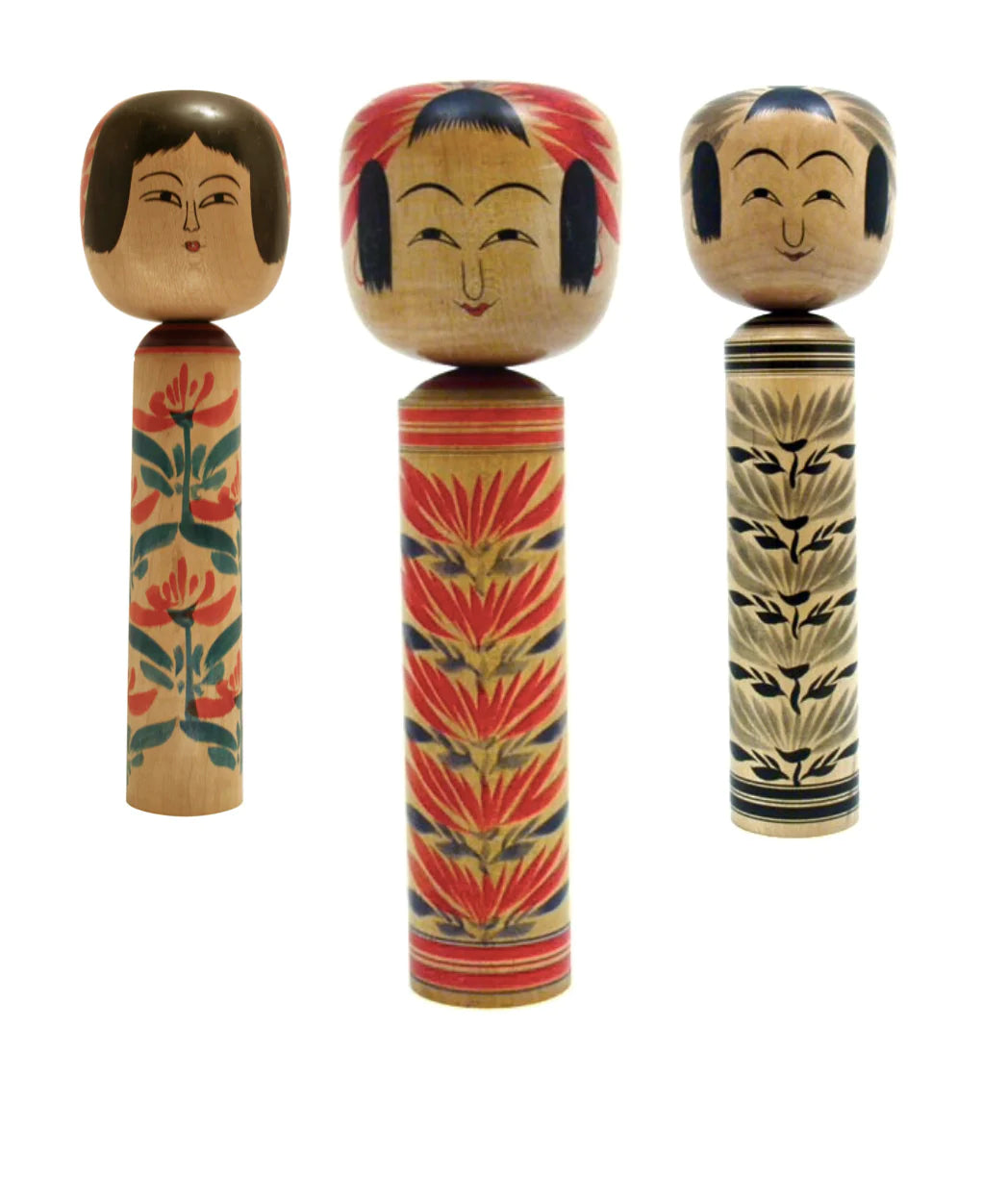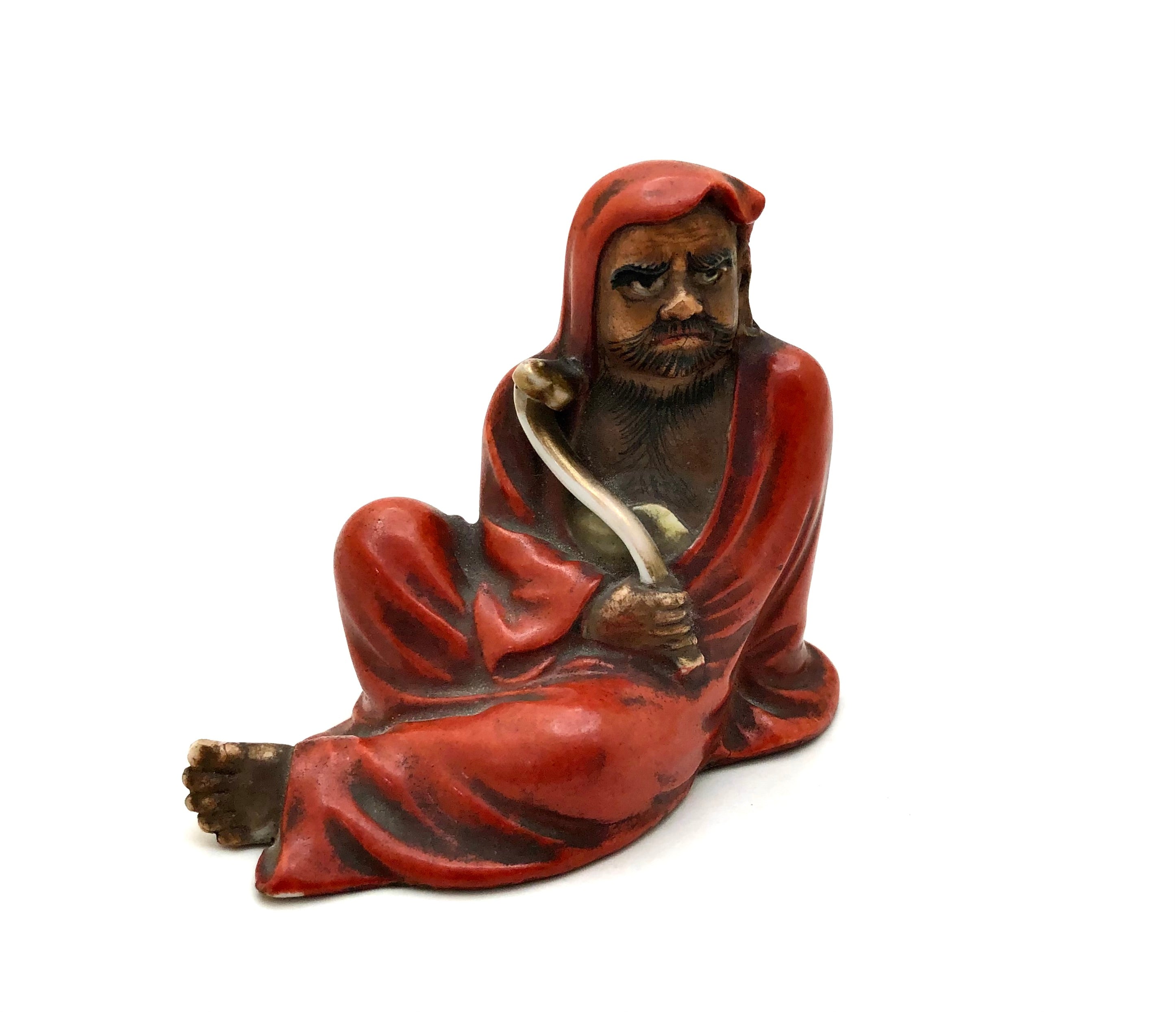

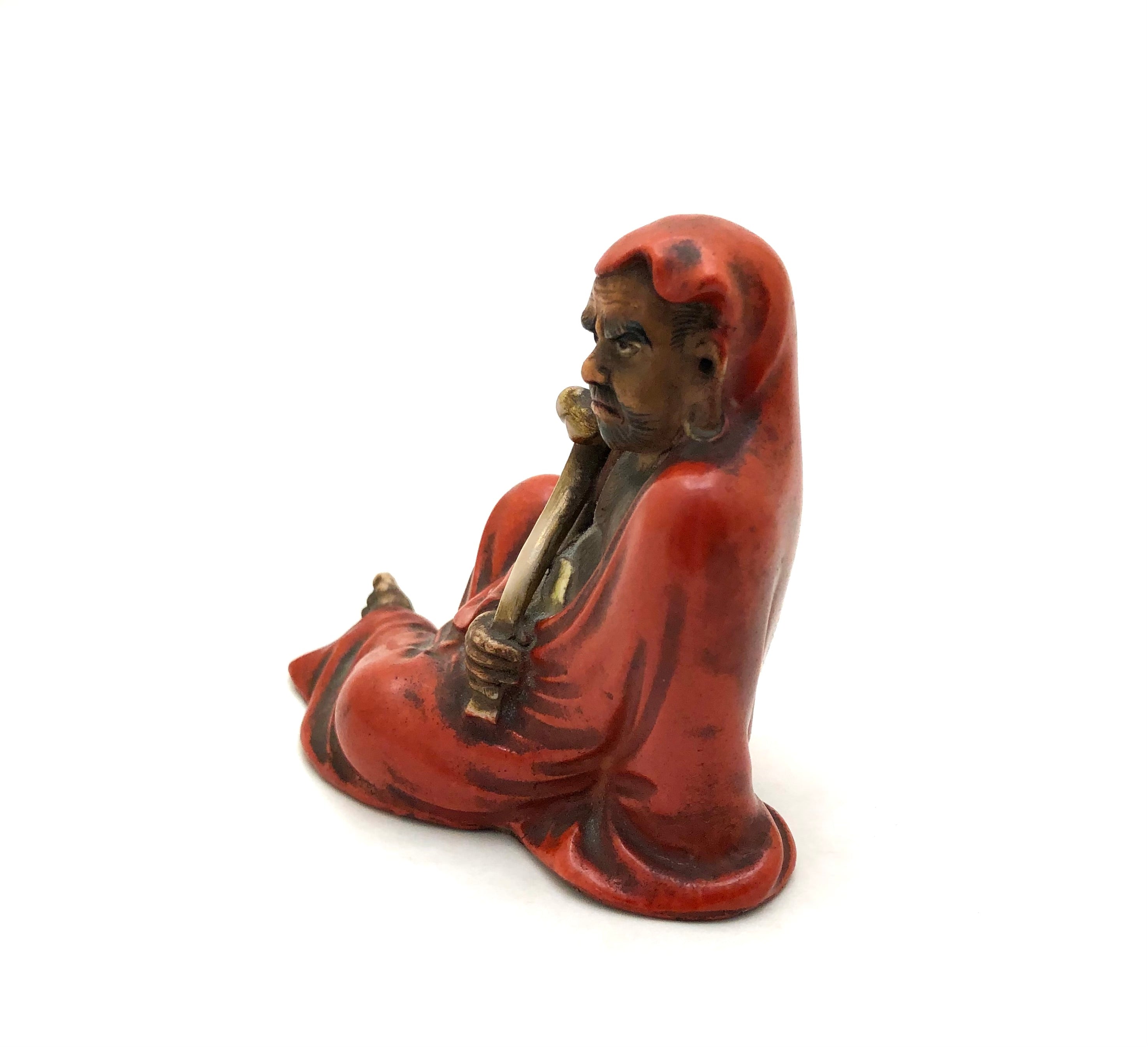
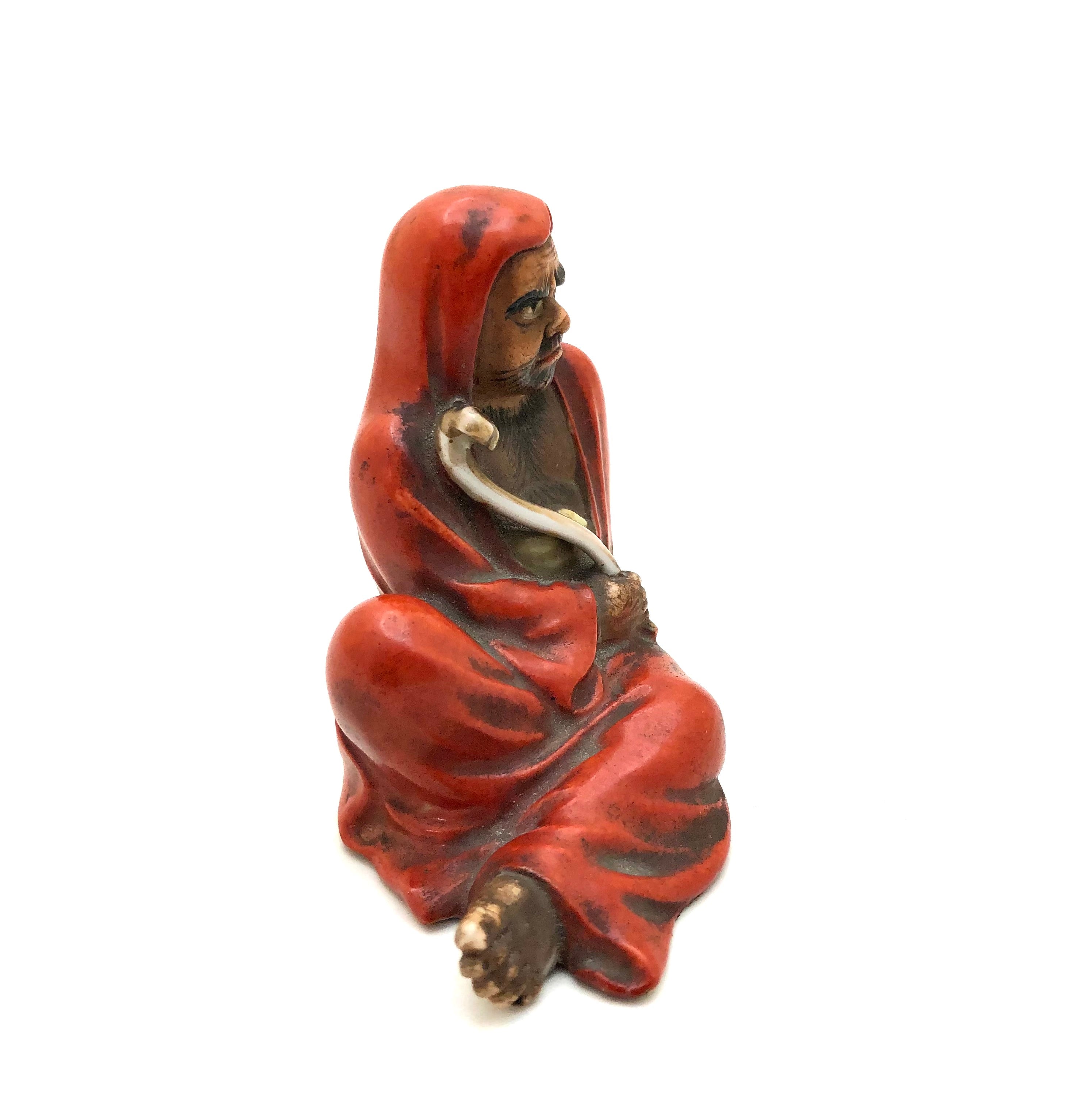
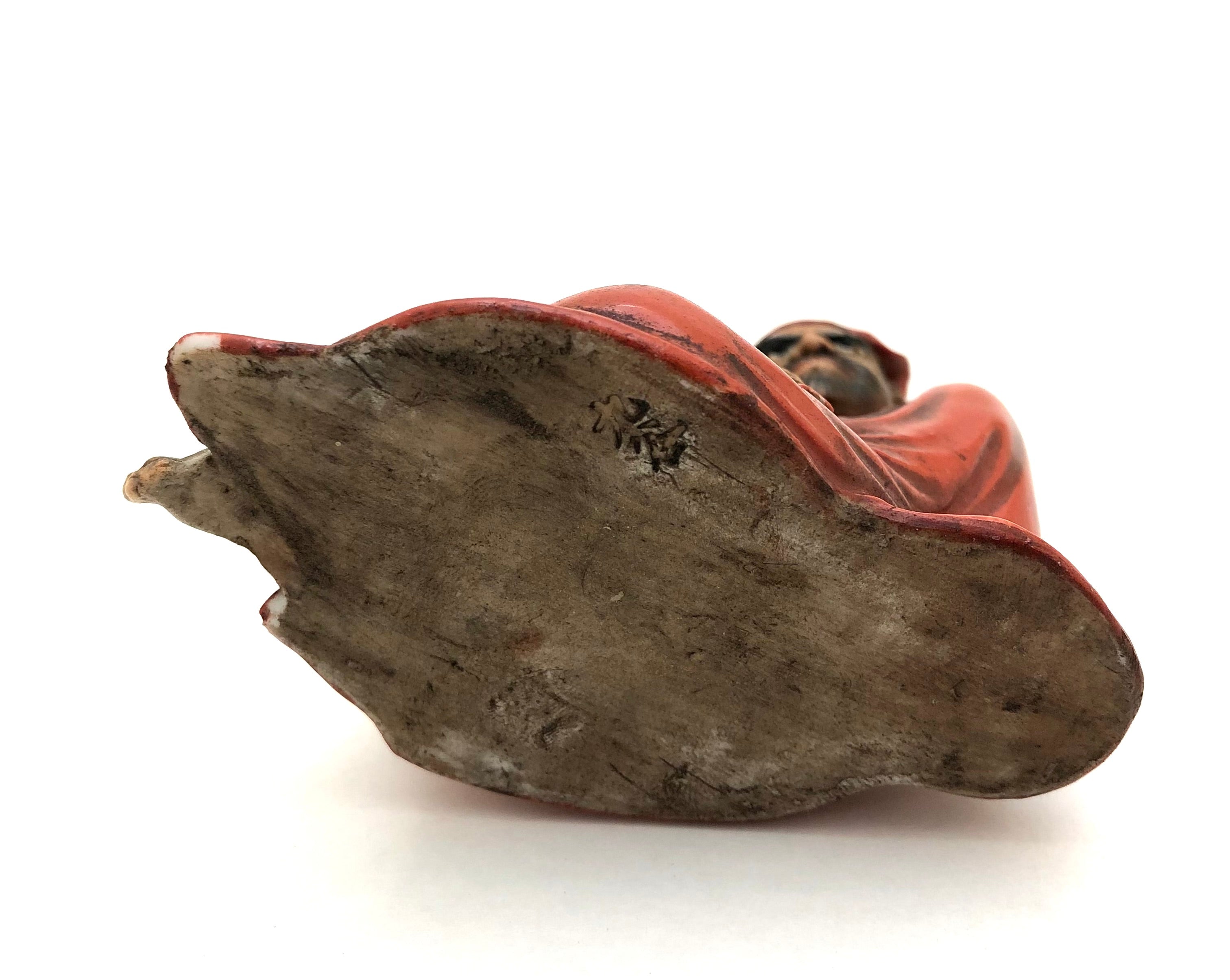

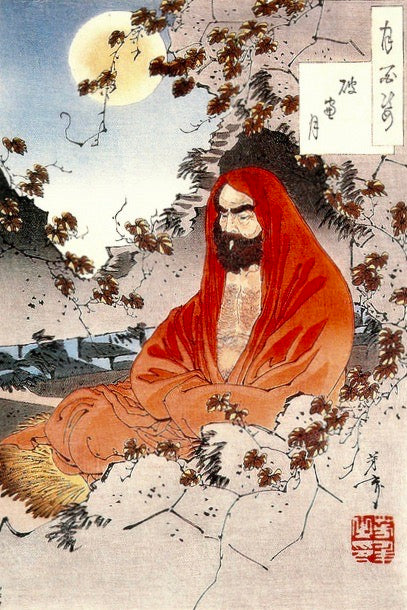
Japanese Kutani Yaki Figure of Reclining Daruma
Dimensions: 3-1/8”h x 3-1/2”l x 1-3/4”w
Daruma, a Zen Buddhist Monk is shown reclined in monastic costume typically seen by the mid-sixth-century founder of the Zen (Ch’an) sect of Buddhism. The face of this vintage figure is intense and full of radiance and expression. His power is embedded in his benevolent facial features with expressive eyes, large eyebrows in the shape of a crane, an elongated ear with an ear loop, and a detailed flaring beard and delicately painted chest hair connoting longevity. The unique asymmetrical shape shows the Patriarch fully robed in an outstretched relaxed pose. This old porcelain figure of Daruma is dressed in a variegated saffron & crimson robe and cowl finished in overglaze enamel, (the color of the robe of a high-ranking religious figure). He is in a reclined, relaxed, and contemplative position holding a glowing enameled mother-of-pearl & gold Ruyi nyoi Septer, which is shaped as a short curled staff with an imitation on one end of a lingzhi fugus, a traditional symbol of longevity. It is also said to carry religious significance as a reminder of a lotus, the sacred flower in Buddhism.
This piece was most likely made as a scholar’s object or a piece of personal religious art that were luxury goods of their time, but rather than wealth represented the physical embodiment of the scholar’s intellectual curiosity and aesthetic taste. This figure was purchased out of a California estate which came on an antique Chinese rosewood stand. At the bottom of the figure is the impressed Kutani mark.
Condition: Exceptional condition exhibiting an aged patination and meticulous care. There are no missing elements, no scratches with minimal imperfections related to daily use with all detailed elements intact. “As is” means the object has not been cleaned or restored and retains the original craftsmanship, meeting the standards of the collector of this Japanese folk art genre.
Additional Information: Kutani ware is pottery for everyday life and for the tea ceremony, made in the Kaga Province (now Ishikawa Prefecture). The tradition started in the late 17th century. As part of a policy to encourage local industry, a kiln to make colored porcelain was established at Kutani village, when high-quality porcelain type clay was discovered there. Potters were brought from Hizen (in present-day Saga Prefecture), which was known at the time as a center of porcelain production. This was the beginning of the local manufacture of colored porcelains and china.
The type of pottery was named Kutaniyaki after the village where it began. It had a distinctive style that involved the plentiful use of Kutani red hue which was used to cover porcelains with expressive decoration.
Return Policy
Our antique/vintage pieces are identified/described and professionally photographed, and considered, “as is”, therefore all sales are final. Read our full refund and return policy.


